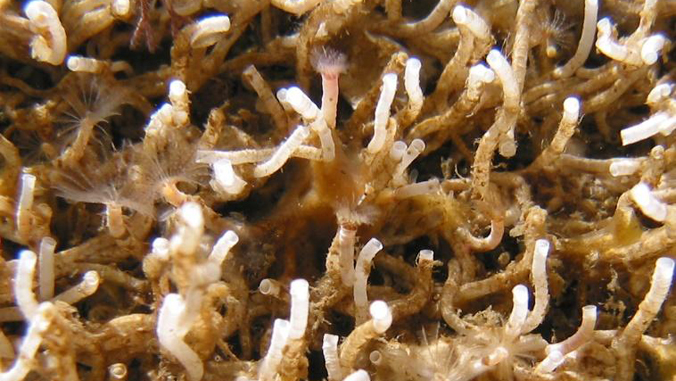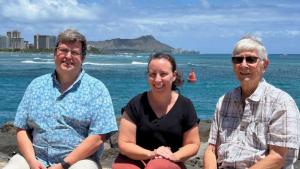
The marine tubeworm Hydroides elegans is a major problem for the shipping industry, as it coats the hulls and propellers of ships, as well as piers, nets of mariculture facilities, and the pipes that bring cooling sea water to electrical and industrial facilities. But what causes this marine invertebrate—that starts as a tiny, swimming larva—to settle onto a surface and transform?
A recent study, led by Marnie Freckelton, a postdoctoral researcher at the Kewalo Marine Lab, a unit of the Pacific Biosciences Research Center (PBRC) in the University of Hawaiʻi at Mānoa School of Ocean and Earth Science and Technology (SOEST), revealed that the carbohydrate portion of a complex molecule, called lipopolysaccharide, produced by specific bacteria is a signal to the tubeworms that they have found the “right spot,” when settling on ships or marine facilities.

The bacterial communities that rapidly coat newly submerged surfaces in the seas create a biofilm and produce chemical signals that are detected by swimming larvae. The new research is groundbreaking in its analysis of the chemicals from specific biofilm bacterial species that interact with the larvae of this tubeworm and induce them to settle and transform.
“In this way, biofilm bacteria initially establish and then maintain communities of animals and plants on the ocean bottoms by recruiting their larvae and spores to the sites,” said Freckelton. “The research provides strong evidence for the bacterial-molecular basis of the formation and maintenance of all benthic marine communities in the world’s seas.”
Mysteries remain
The team of scientists, including Michael Hadfield, senior author on the paper and emeritus professor in PBRC, noted that many other—in fact, most—biofilm bacterial species do not induce settlement in the tubeworm larvae. And even among different strains of the same bacteria collected from different habitats, some will induce settling and others will not.
“Looking to the future, we are interested in an in-depth structural understanding of the parts of these molecules that induce settlement and metamorphosis in marine species and how they interact in the larvae,” said Freckelton. “We also plan to test the larvae of other marine invertebrates, such as coral, for patterns in their settlement cues.”

